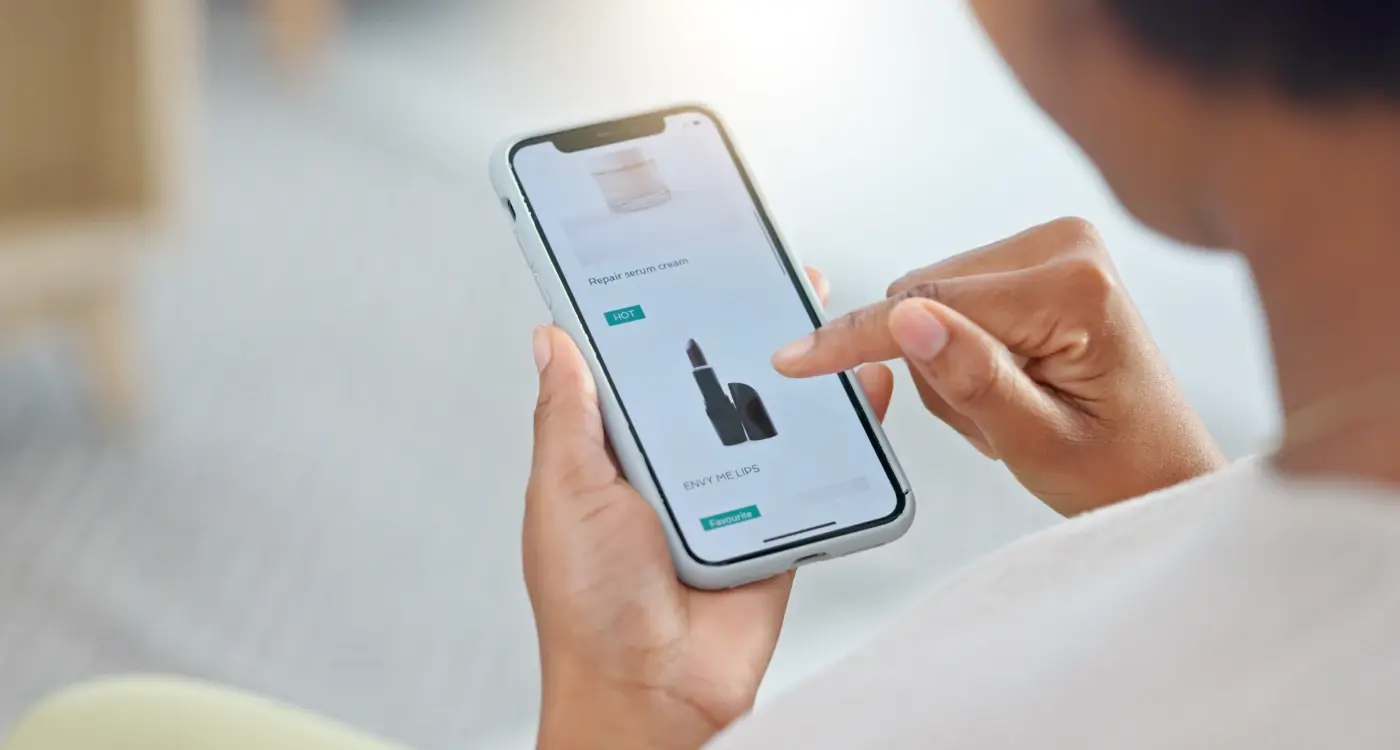What Features Should My Workout App Have To Keep Users Motivated?
Creating a successful workout app has become one of the biggest challenges in mobile development—and I've worked on enough fitness projects to know that features alone won't guarantee success. The real trick lies in understanding what actually keeps people coming back to exercise, day after day, week after week. Most fitness apps fail not because they lack workout features, but because they completely miss the mark on user motivation and engagement.
I've seen plenty of apps packed with hundreds of exercises, detailed nutrition trackers, and fancy video content that still can't retain users past the first month. Why? Because having great workout features means nothing if people don't feel motivated to use them. The apps that succeed—the ones that genuinely change people's lives—focus just as much on the psychology of habit formation as they do on bicep curls and meal planning.
The best workout apps don't just track your fitness journey; they become an integral part of it
Throughout this guide, we'll explore the specific features that transform casual downloaders into dedicated users. From progress tracking systems that actually make sense to social features that build genuine community, each element needs to work together to create something bigger than the sum of its parts. Because at the end of the day, the most important muscle your app needs to exercise is motivation itself.
Understanding What Makes Users Stick Around
Let's be honest—most fitness apps get deleted within the first week. I've seen this happen countless times with clients who thought having a beautiful interface would be enough. It's not. The real challenge isn't getting people to download your workout app; it's keeping them engaged and coming back day after day.
After working with dozens of fitness startups, I've noticed the apps that succeed focus on solving real problems rather than adding flashy features. Users stick around when they feel progress, see results, and don't feel overwhelmed by complexity.
The Top Reasons Users Abandon Workout Apps
- Workouts feel too difficult or too easy from the start
- No clear sense of progress or achievement
- Interface is confusing or takes too long to navigate
- Content becomes repetitive after a few sessions
- App demands too much personal information upfront
The apps that retain users do three things well: they meet people where they are fitness-wise, they show progress clearly, and they adapt over time. One CEO I worked with put it perfectly—"People don't want to feel stupid or weak when they open our app." That mindset shaped everything we built together, and their retention rates improved dramatically.
Building an app that keeps users engaged isn't about cramming in every possible feature. It's about understanding what motivates your specific audience and delivering that consistently.
Progress Tracking That Actually Works
Progress tracking is where most workout apps either shine or completely fall apart. I've seen apps that track everything under the sun—calories, steps, heart rate, sleep patterns, water intake—but miss the mark entirely because they're overwhelming users with data they don't actually care about.
The secret isn't tracking more; it's tracking smarter. Your users want to see clear evidence that their efforts are paying off, but they don't want to feel like they're studying for a maths exam every time they open your app.
Visual Progress That Makes Sense
Numbers alone don't motivate people—visual representations do. A simple graph showing strength gains over time or a progress bar filling up as someone gets closer to their goal creates that instant satisfaction users crave. I've worked with fitness startups where we replaced complex data tables with clean, colourful charts and saw engagement jump by 40%.
- Weight lifted over time with clear trend lines
- Workout frequency shown as streaks or calendar heat maps
- Body measurements tracked with before/after photo comparisons
- Personal records highlighted with celebratory animations
Personalised Milestones
Generic milestones like "complete 10 workouts" work for some people, but personalised goals based on individual progress patterns work better. Your app should learn what motivates each user and adjust accordingly—some people love daily wins, others prefer weekly challenges.
Let users choose their primary progress metric. Some care about consistency, others about intensity. Give them control over what success looks like.
Social Features That Build Community
When I'm working with clients on workout apps, they often overlook one of the most powerful motivators out there—other people. We humans are naturally social creatures, and bringing that element into fitness apps can make the difference between someone using your app for a week versus sticking with it for months.
The trick is getting social features right without making them feel pushy or overwhelming. Nobody wants to feel like they're being judged for missing a workout or not lifting heavy weights. The best social features I've seen celebrate participation rather than perfection.
Community Building Features That Actually Work
Here are the social features that consistently keep users coming back:
- Friend challenges that focus on consistency rather than performance
- Group workouts where users can join virtual classes together
- Achievement sharing that lets people celebrate milestones
- Support groups for specific goals like running a 5K or losing weight
- Workout buddy matching based on fitness level and schedule
- Community boards where users can ask questions and share tips
The key is making these features optional—some people prefer to work out alone, and that's perfectly fine. But for those who thrive on community support, these social elements can turn your app from just another fitness tool into something that becomes part of their daily routine.
Personalisation and Customisation Options
One of the biggest mistakes I see in workout apps is treating everyone like they're the same person. They're not! A 25-year-old marathon runner has completely different needs than a 45-year-old mum trying to squeeze in ten minutes between school runs. Your app needs to recognise this from day one.
The magic happens when users can make the app feel like their own space. Let them choose their preferred workout types, set their own goals, and pick exercise difficulty levels that actually match their fitness. Don't just offer beginner, intermediate, and advanced—that's lazy design. Give them proper customisation that reflects their real situation.
Making It Feel Personal
Smart workout features should learn from user behaviour. If someone always skips cardio but loves strength training, your app should pick up on that pattern. The recommendations should shift accordingly; the interface should prioritise what they actually use.
The best fitness apps feel like they know me better than I know myself—they suggest exactly what I need when I need it
Customisation That Actually Matters
Don't get carried away with pointless personalisation options. Nobody cares about changing button colours. They do care about adjusting workout duration, swapping exercises they hate, and setting rest periods that work for their schedule. Focus your user motivation efforts on customisation that impacts their actual workout experience, not just how pretty things look.
Gamification Elements That Don't Feel Forced
Getting gamification right in workout apps is tricky—and I've seen plenty of apps get it spectacularly wrong over the years. The problem isn't with gamification itself; it's when developers slap on points, badges, and leaderboards without thinking about whether they actually make sense for fitness.
The best gamified workout apps feel natural. Take achievement badges—instead of "Congratulations! You opened the app 5 times!" (which feels patronising), successful apps reward meaningful milestones like "First 5K completed" or "Workout streak week achieved". These celebrations match real fitness accomplishments that users already care about.
Making Points Actually Mean Something
Points work brilliantly when they're tied to effort rather than just participation. Apps that give the same points for a 10-minute walk as a 45-minute strength session miss the mark completely. Smart workout apps calculate points based on workout intensity, duration, and personal improvement—making the scoring system feel fair and motivating.
Challenges That Match Real Goals
The most engaging challenges mirror what people naturally want to achieve. "Walk 10,000 steps this week" feels achievable and health-focused. "Tap the screen 100 times" feels like busywork. When gamification elements align with genuine fitness goals, users don't even notice they're being gamified—they're just working towards something they actually want.
Smart Notifications and Reminders
Getting notifications right is one of those workout features that can make or break user motivation. I've worked on fitness apps where we've seen users delete the entire app just because the notifications were too pushy or arrived at the wrong times. It's a delicate balance—you want to keep people engaged without becoming that annoying app they dread seeing pop up on their phone.
The key is making notifications feel helpful rather than demanding. Smart timing makes all the difference. Instead of sending generic "time to work out!" messages at random hours, good workout apps learn when users are most likely to exercise and adapt accordingly. If someone consistently works out at 7am on weekdays but prefers afternoon sessions on weekends, the app should pick up on this pattern.
Types of Notifications That Actually Work
- Gentle reminders when users haven't logged a workout in their usual timeframe
- Motivational messages tied to progress milestones
- Weather-based suggestions for outdoor activities
- Recovery reminders after intense training sessions
- Weekly or monthly progress summaries
The best approach is giving users complete control over what they receive and when. Some people thrive on daily check-ins whilst others prefer weekly summaries. What matters most is that notifications add value to their fitness journey rather than just trying to boost engagement metrics.
Let users customise notification frequency and timing during onboarding, and make it easy to adjust these settings later—user preferences change as their fitness habits develop.
Creating Habits Through Streaks and Rewards
Building a workout habit is tough—we all know that feeling of starting strong in January and fizzling out by February. But here's where smart app design can make all the difference. Streaks and rewards aren't just nice-to-have features; they're psychological tools that tap into how our brains actually work.
The streak system is brilliant because it creates what psychologists call a "loss aversion" response. Once someone hits a seven-day streak, they don't want to break it. I've worked with clients whose apps showed users were more likely to work out on day eight of a streak than on day one—that's the power of momentum.
Types of Rewards That Actually Work
Not all rewards are created equal. The most effective ones feel earned rather than handed out like participation trophies:
- Achievement badges for specific milestones (first 5K, 30-day streak, personal best)
- Unlockable content like new workout routines or meditation sessions
- Points systems that can be redeemed for real-world benefits
- Progress celebrations that highlight how far they've come
The key is timing. Rewards need to come at moments when motivation typically dips—after the initial excitement wears off but before the habit is fully formed. That's usually around the two-week mark in my experience.
Conclusion
Building a workout app that keeps people coming back isn't about cramming in every feature you can think of—it's about understanding what actually motivates your users to move. After working on dozens of fitness apps over the years, I can tell you that the most successful ones focus on a core set of workout features that work together seamlessly.
The magic happens when progress tracking shows real results, social features create genuine connections, and personalisation makes each user feel like the app was built just for them. Smart notifications nudge without annoying; gamification elements feel natural rather than gimmicky; streaks and rewards build lasting habits instead of short-term excitement.
What really matters is user motivation—people need to feel like they're achieving something meaningful. Whether that's seeing their running pace improve week by week, getting encouragement from workout buddies, or simply maintaining a streak they're proud of, engagement comes from emotional connection to progress.
The fitness app market is crowded, sure, but there's always room for an app that genuinely helps people stick to their fitness goals. Focus on solving real problems rather than adding flashy extras, and you'll build something that people actually want to use every day. That's how you create lasting engagement that goes beyond the typical January fitness rush.
Share this
Subscribe To Our Learning Centre
You May Also Like
These Related Guides

Should I Tell Users When I've Fixed A Bug In My App?

How Can AI Improve App User Psychology?



